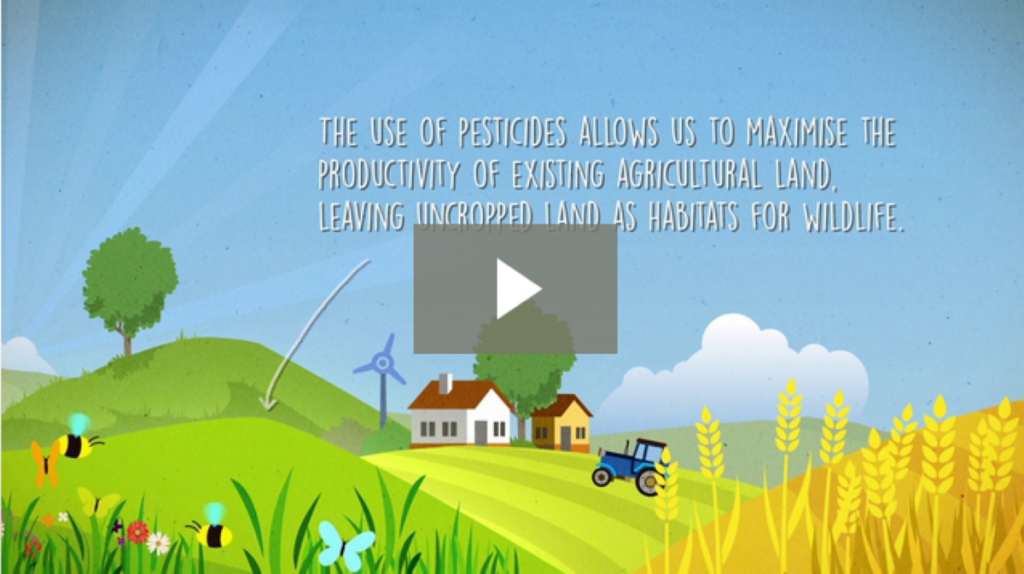Farming cannot stand still
Pesticides in Perspective – Farming cannot stand still
An animation showing how modern farming relies on the innovations plant science provides to maintain biodiversity and wildlife.
Script
Each day there are 200,000 new mouths to feed across the world, and by 2050 the global population will have reached 9 billion.
This places an ever increasing strain on food production and supply. According to the UN Food and Agriculture Organisation the world must produce 60% more food to meet this demand.
Farming cannot stand still. Modern methods are critical to providing a safe, affordable and sustainable supply of food. But it’s important that we minimise the impact of food production on the environment and on wildlife.
The use of modern crop protection technologies such as pesticides allows us to maximise the productivity of existing agricultural land, so leaving uncropped land as habitats for wildlife.
To look at it another way, traditional and lower-input approaches to farming such as organic produce significantly lower yields than modern methods.
So, to produce the same amount of food, we would need to use more of the land that currently supports biodiversity.
UK farmers are amongst the best in the world at producing food while protecting habitats and wildlife – and that’s no surprise. It’s in their interests to ensure the long-term future of the land on which they rely for their and their families’ livelihoods.
In recent years, UK farmers have, for instance, planted or restored approximately 30,000km of hedgerows to provide food and shelter for wildlife.
And innovation in crop protection has meant they continue to be able to protect their crops from pests, weeds and diseases while the amount of pesticides applied has decreased by 71% from 1990.
Farmers are even using modern technologies to boost the biodiversity and wildlife of uncropped land.
Precision mapping allows farmers to identify less productive areas which can be set aside for biodiversity. Targeted use of herbicides can then help establish strips of pollen-rich flowers to produce a habitat more attractive to bees and other insects.
So, far from being detrimental to the environment, the ever increasing demand for food means modern farming is critical to our ability to maintain biodiversity and wildlife.
Let’s make the land we use as productive as possible so we can protect, as well as feed, our planet.
Let’s keep pesticides in perspective.





-01.png)